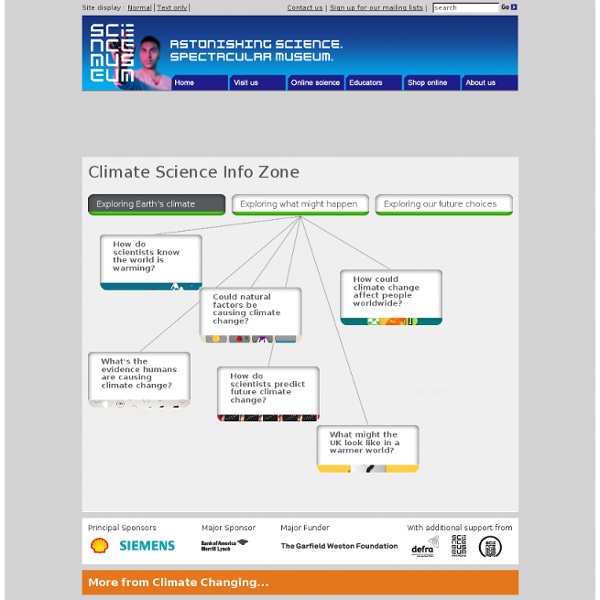A History of Climate Science
Skeptical Science takes a different approach to Naomi Oreskes' Science paper who sorted her papers into "explicit endorsement of the consensus position", "rejection of the consensus position" and everything else (neutral). In this case, the backbone of our site is our list of climate myths. Whenever a climate link is added to our database, it is matched to any relevant climate myths. Therefore, each link is assigned "skeptic", "neutral" or "proAGW" whether it confirms or refutes the climate myth. This means a skeptic paper doesn't necessarily "reject the consensus position" that humans are causing global warming. There are a large number of neutral papers. So yes, categorisation can get a little complicated and I expect there will continue to be discussion on the issue of classification.
DESIGN SQUAD . Confetti Launcher
The Invention Challenge Invent a device that launches a spoonful of confetti into the air. The bigger the cloud, the better. Materials (per pair) paper confetti 1 straw 2 sheets of cardboard (approx. 8.5 x 11 in.) duct tape 1 wooden spool 4 paint stirrers 4 rubber bands 2 8-oz. paper cups 2 4-oz. paper cups string Brainstorm and Design To help you brainstorm, look at the materials, discuss the questions below, and sketch some design ideas. Name some devices that launch objects into the air. Build OK, show time! Test, Evaluate, and Redesign Does the confetti burst out in the shape you want? Discuss What Happened To learn about an idea's strengths and weaknesses, inventors build a series of early designs called prototypes. Who might use a confetti launcher?
TckTckTck | the Global Campaign for Climate Action
Discovery Education - Curiosity in the Classroom
Breathingearth - CO2, birth & death rates by country, simulated real-time
The physics of Angry Birds: how it works
We're sure, without a doubt, that you know Angry Birds. We're equally sure that you've played it - it's available for purchase on innumerable device platforms, and even for free on Google Chrome and Android, albeit with annoying ads. And we're pretty certain you're better at it than we are. Just in case, the basic plot of the game is to knock out a bunch of green pigs by firing flightless birds at them from a catapult. The birds are angry because the pigs have stolen their eggs, and the pigs are trying to protect themselves by hiding in some remarkably ramshackle structures made of wood, glass, or rock. Put baldly like that it doesn't seem like much, but in reality it's quite addictive. We make judgments about how the momentum of the red bird will be transferred to the planks and sheets of glass from our familiarity with colliding snooker balls. Exploring velocity So how did the developers at Rovio, the company that produces Angry Birds, write such realistic interactions into the game?
Earth Exploration Toolbook
Awarded Science Magazine's Science Prize for Online Resources in Education (SPORE), September 30, 2011 AAAS Press Release What is the Earth Exploration Toolbook? Developed by teams of scientists and educators, the Earth Exploration Toolbook (EET) is a collection of online Earth system science activities. Within the context of a case study, each chapter guides users through a step-by-step process in which they access data and use analysis tools to explore real issues and questions in Earth system science. Who is it for? Earth Exploration Toolbook chapters are written to the teacher, generally at the secondary and college level. How can I learn more? Come on into the site!
Quick Look: How Crowdsourcing is Changing Science
Interesting piece about how citizen scientist projects like FoldIt are calling into question how scientists have been conducting their research until now. “Science is, for the most part, a closed society organized into little fiefdoms of highly trained specialists, which means only a few minds engage with any given problem … One reason for the sudden turn to crowd science is that it offers an imaginative answer to a central problem of 21st-century science: too much information. But its early successes, which have shocked even the architects of the approach, suggest that over time pro-am collaborations hold the potential to alter the landscape of science in important ways, harnessing countless able brains to do work that was once the province of a few overwhelmed experts.” At the end of the 19th century, a team of British archeologists happened upon what is now one of the world’s most treasured trash dumps. Read more at: www.bostonglobe.com



